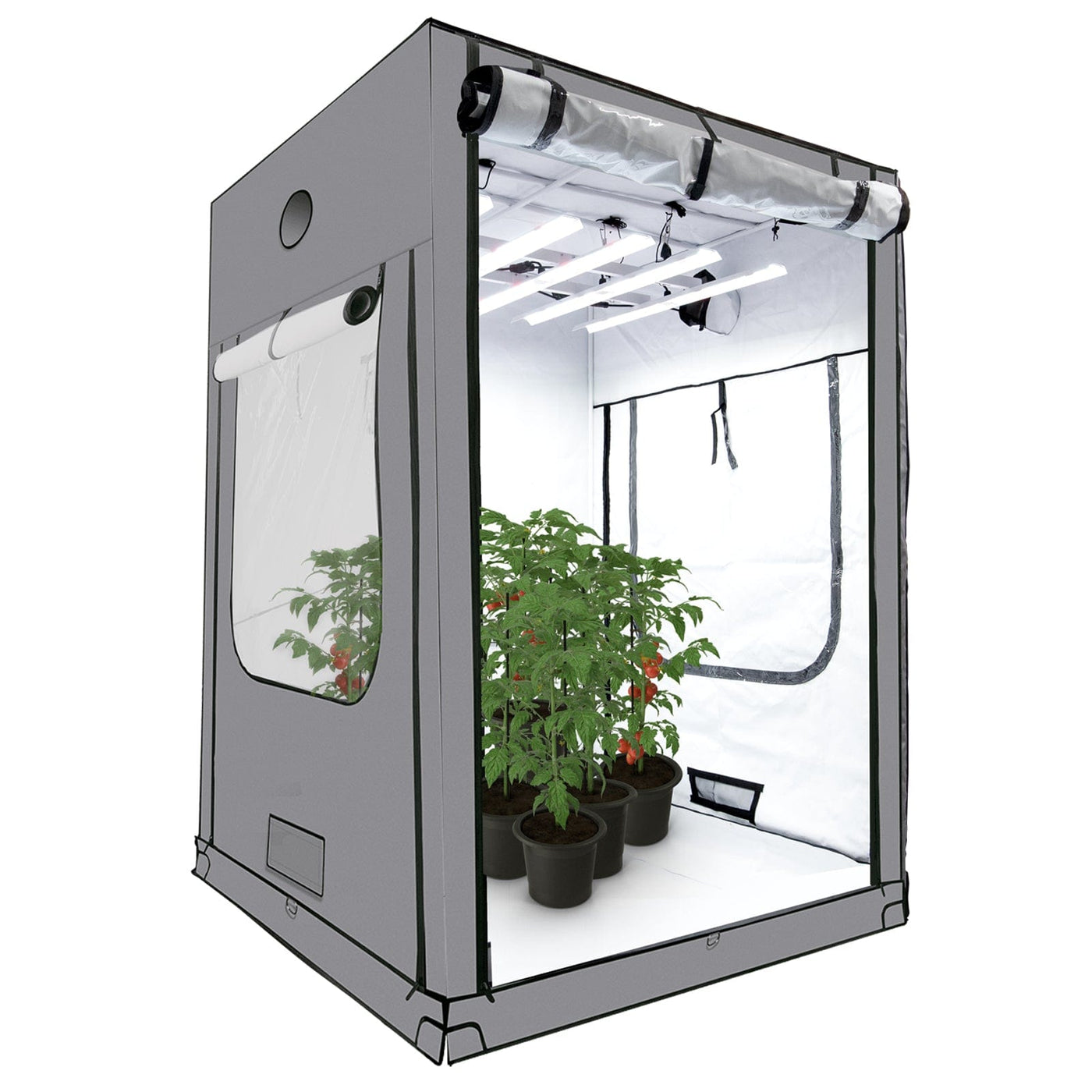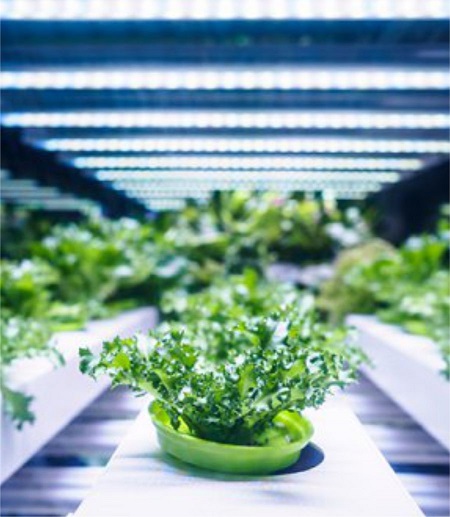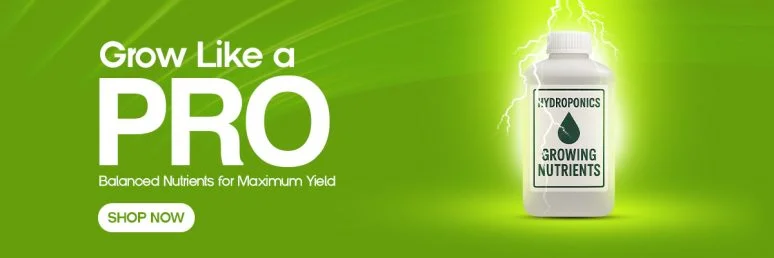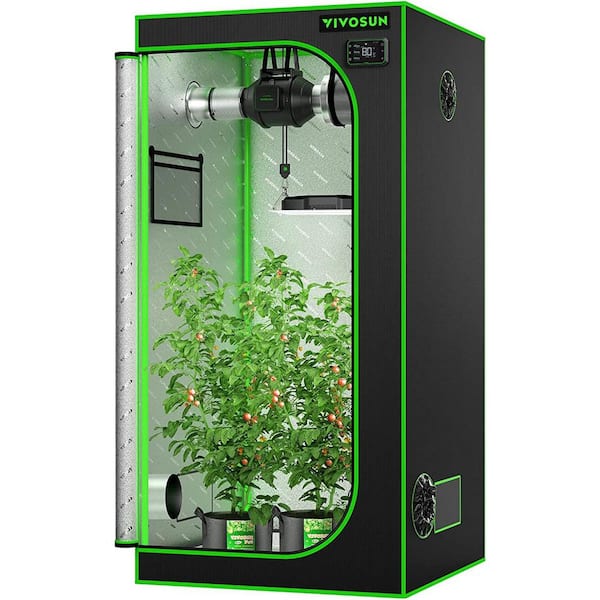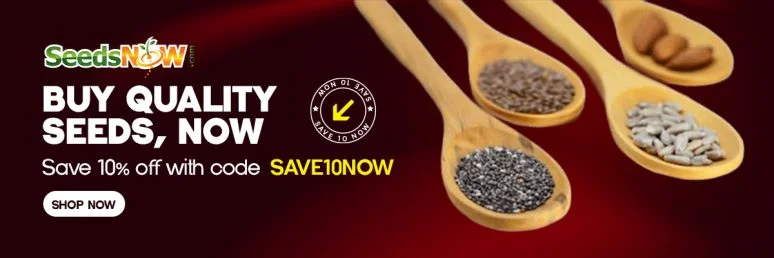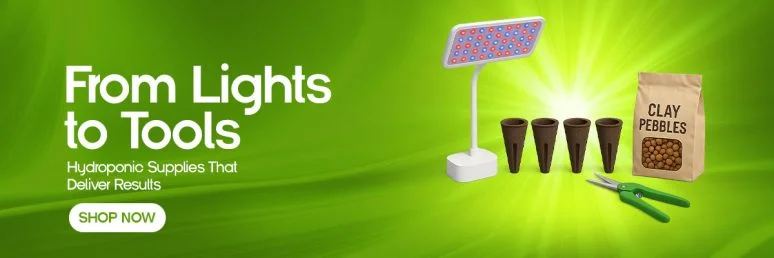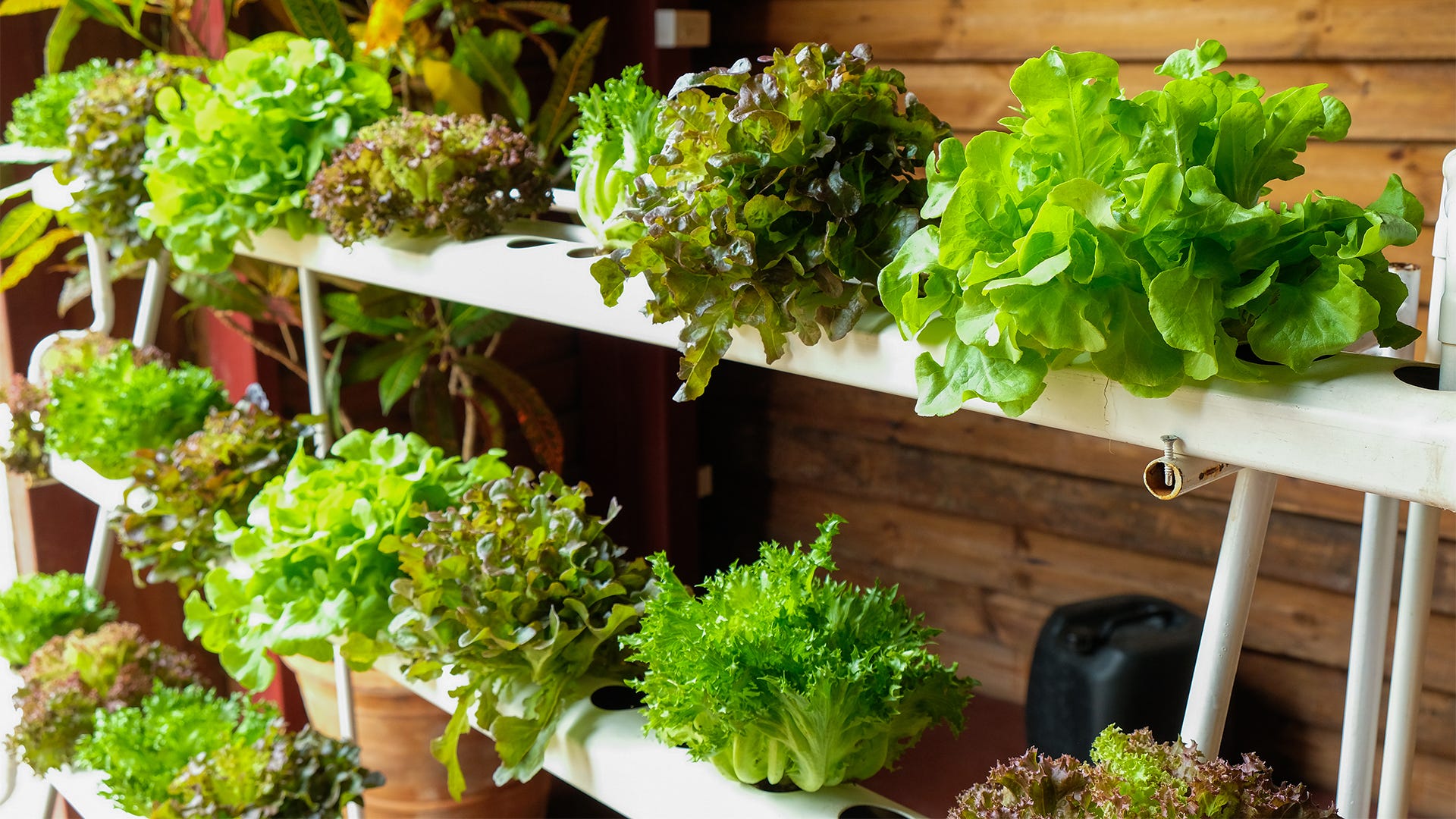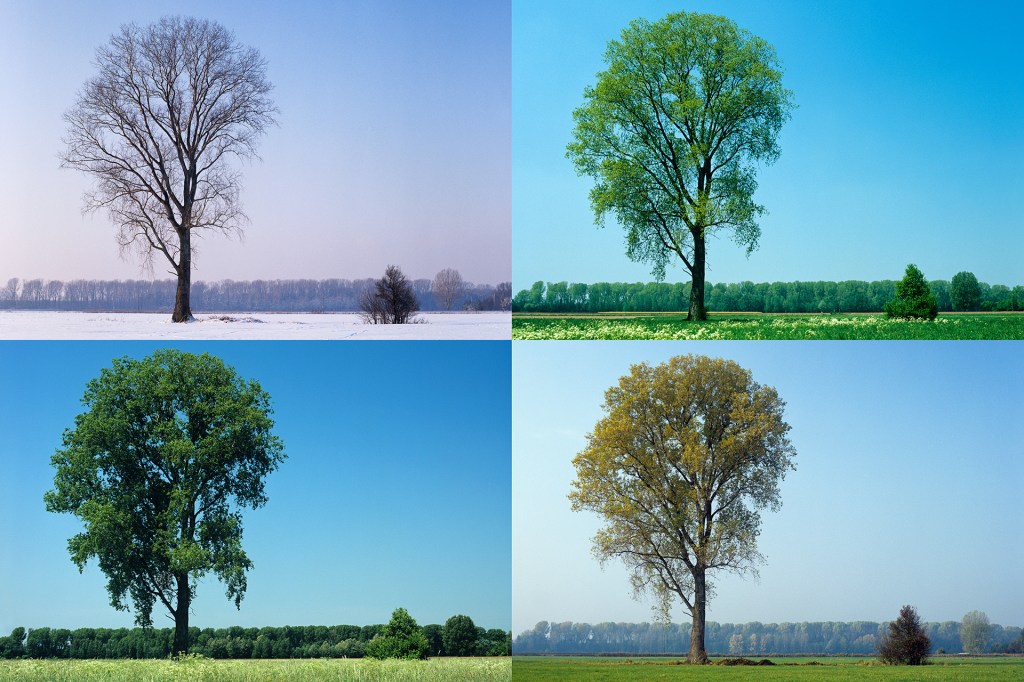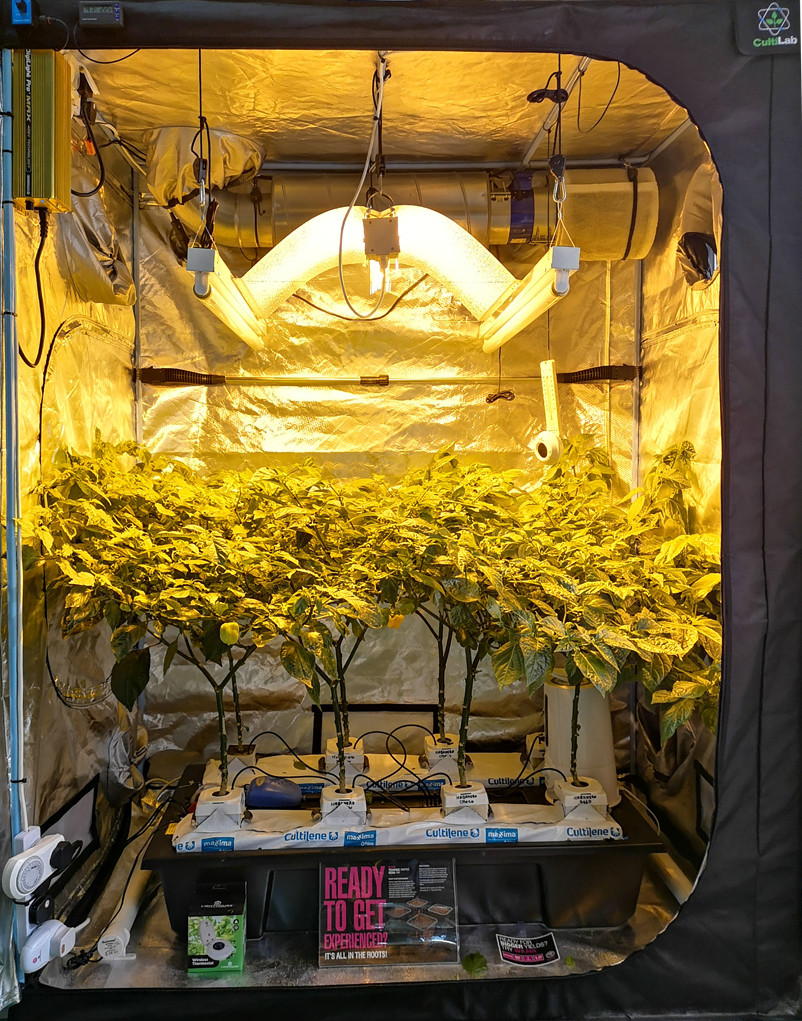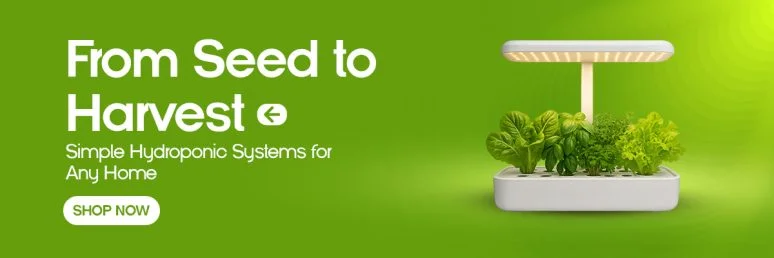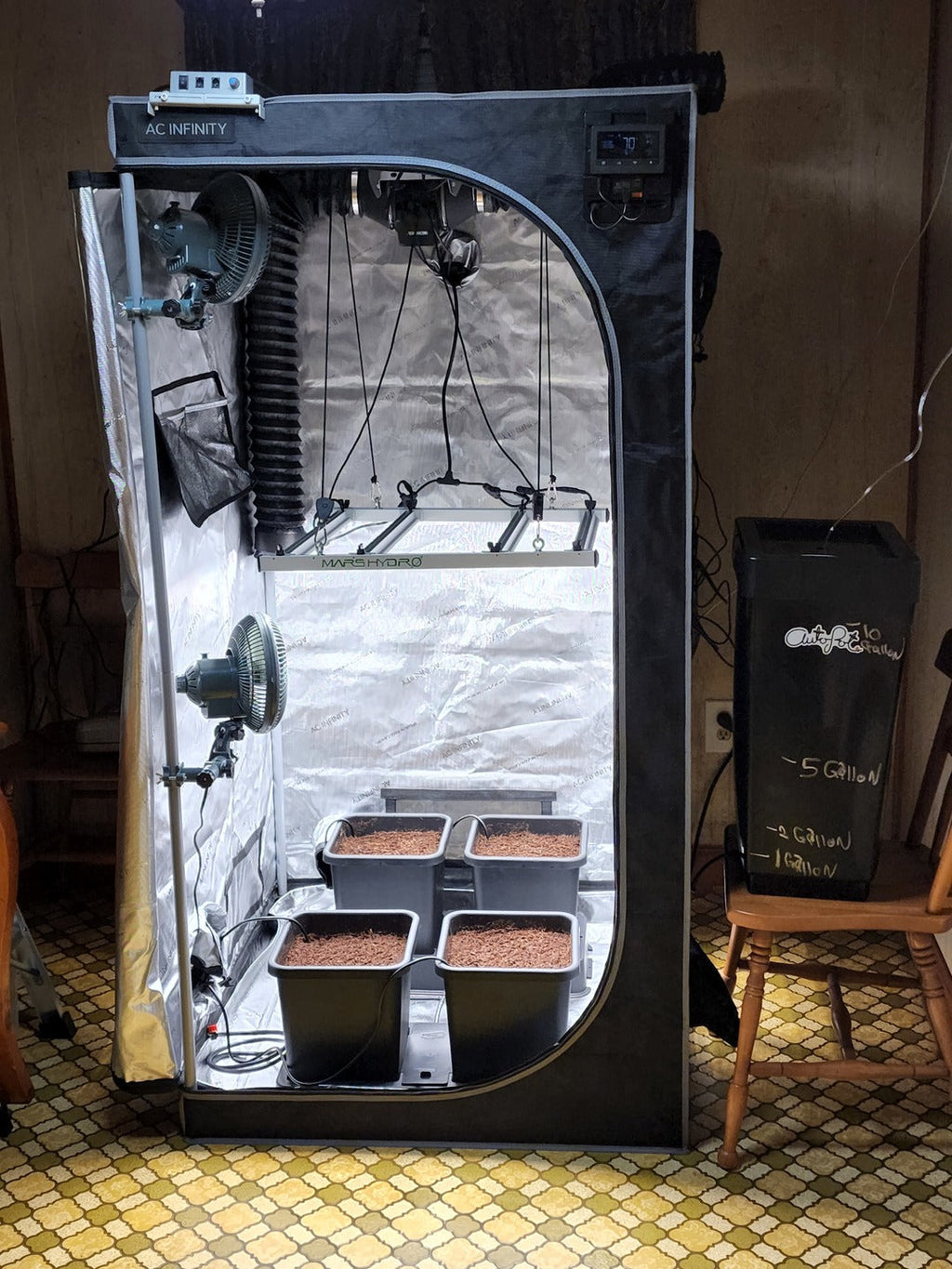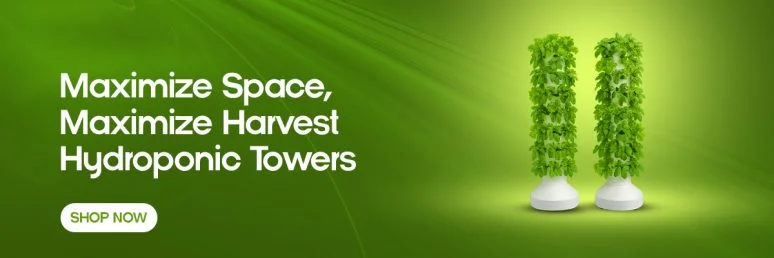Top Reasons to Use a Grow Tent for Hydroponics
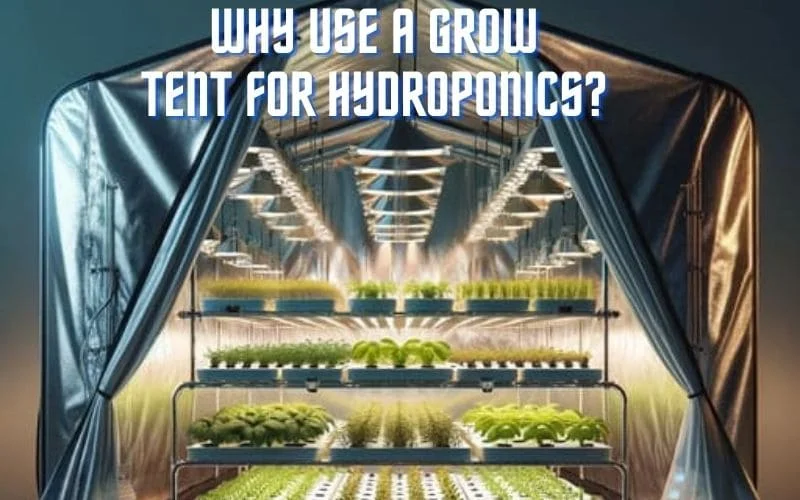
Key Takeaways
- Grow tents create a perfectly controlled environment for hydroponic plants, allowing precise management of temperature, humidity, and light cycles throughout all growth stages.
- Using a grow tent can increase yields by up to 30% through maximized light efficiency with reflective interiors and prevention of light leakage.
- Grow tents provide an effective barrier against pests, diseases, and contaminants, significantly reducing the need for pesticides in your hydroponic system.
- With a properly set up grow tent, you can grow crops year-round regardless of outdoor weather conditions or seasonal limitations.
- Acorn Horticulture’s specialized grow tent solutions offer innovative features designed specifically for hydroponics enthusiasts looking to optimize their growing space.
Why Your Hydroponic Garden Needs a Grow Tent Right Now
“HLG 5′ x 5′ Grow Tent Combo …” from horticulturelightinggroup.com and used with no modifications.
Growing hydroponically without a tent is like driving without a seatbelt—possible but unnecessarily risky. After years of working with countless hydroponic systems, I’ve seen the dramatic difference a quality grow tent makes in both yield quantity and crop quality. Acorn Horticulture has found that most hydroponic growers who switch to using grow tents report seeing improvements in their harvests within the first growing cycle. The controlled environment a grow tent provides isn’t just a luxury—it’s the foundation of successful indoor hydroponic growing that separates hobbyists from consistent producers.
A grow tent creates a microclimate that puts you in complete control of your plants’ environment. Instead of fighting against fluctuating room conditions or seasonal changes, you’re working within a predictable space where you set the rules. This level of control means less stress for your plants and fewer variables for you to worry about. For hydroponics specifically, this controlled environment allows you to fine-tune nutrient delivery, light exposure, and humidity levels with precision that’s simply impossible in an open growing area.
The beauty of modern grow tents lies in their versatility and ease of use. They come in various sizes to fit any space, from compact 2×2 foot models perfect for apartment growers to expansive 10×10 foot options for serious producers. Setup typically takes less than an hour, and the benefits begin immediately. Many of my clients who hesitated about the initial investment found that their tents paid for themselves within a single growing season through improved yields, reduced pest problems, and lower overall resource usage.
Perfect Climate Control: The #1 Reason Growers Choose Tents
“Grow Tent Day 65, Running out of Space …” from www.reddit.com and used with no modifications.
Climate control stands as the primary reason serious hydroponic growers invest in quality grow tents. When I consulted for commercial operations, the first issue we always addressed was environmental stability—and grow tents solve this problem elegantly. Inside a properly sealed tent, you create a microclimate bubble where outside conditions become irrelevant. This separation from the larger environment means your basement’s humidity swings, your living room’s temperature fluctuations, or your garage’s seasonal extremes no longer affect your precious plants.
“The difference between success and failure in hydroponics often comes down to environmental stability. A quality grow tent is the most cost-effective way to achieve this stability without building a permanent grow room.” — Experienced Hydroponic Grower
Temperature Management Made Simple
Maintaining optimal temperature ranges becomes remarkably straightforward with a grow tent. The enclosed space allows for precise heating and cooling adjustments that would be prohibitively expensive to implement in an entire room. Most hydroponic plants thrive between 65-80°F (18-27°C), and a grow tent lets you maintain this range regardless of your home’s ambient temperature. Using simple exhaust systems, inline fans, and occasionally supplemental heating, you can create the perfect growing environment for your specific crop. I’ve helped growers maintain ideal temperatures even in challenging spaces like attics and basements where ambient temperatures would otherwise make growing impossible. For more tips on creating the perfect environment, check out this guide on growing hydroponic Asian pea shoots.
Humidity Control for Every Growth Stage
Different growth stages demand different humidity levels—a fact that makes grow tents invaluable for serious cultivators. Seedlings and clones typically require 70-75% humidity, while flowering plants prefer a drier 40-50% environment. Without a tent, achieving these specific ranges is nearly impossible. Inside a tent, simple tools like humidifiers, dehumidifiers, and strategic ventilation allow you to dial in the perfect moisture level for each stage of growth. This precision humidity control prevents common problems like powdery mildew during high humidity periods and nutrient lockout during excessively dry conditions. Learn more about the advantages of using a grow tent in your hydroponics system.
Protection from Seasonal Changes
Seasonal weather shifts can wreak havoc on indoor growing environments, but a quality grow tent creates a buffer against these external changes. During winter months, when indoor heating systems create dry conditions that stress plants, your tent maintains consistent humidity. In summer, when high outdoor humidity might promote fungal issues, your tent’s environment remains stable and controlled. This insulation from seasonal extremes allows for truly year-round growing without the productivity dips that typically occur during transitional weather periods. Many of my clients report that this seasonal consistency alone justifies their tent investment, as it allows for predictable harvest schedules regardless of what’s happening outside.
Light Efficiency That Boosts Plant Growth
“Hydroponics Grow Light – Full Spectrum …” from www.wehydroponics.com and used with no modifications.
One of the most compelling reasons to use a grow tent is the dramatic improvement in light efficiency. The reflective interior walls of quality grow tents can increase light effectiveness by up to 30%, meaning your plants receive more usable light from the same fixtures. This reflection captures light that would otherwise be wasted, directing it back to your plants from multiple angles. I’ve seen growers reduce their lighting costs significantly while actually improving growth rates simply by moving their existing lights into a tent with reflective walls. For more on optimizing lighting, check out red and blue LED grow lights.
Reflective Interior for Maximum Light Coverage
Modern grow tents feature highly reflective interior surfaces—typically mylar or similar materials—that bounce light in multiple directions throughout the growing space. This multi-directional lighting reduces shadowing and ensures that even lower branches and leaves receive adequate light intensity. The result is more uniform growth throughout the canopy and less stretching as plants compete for light. In hydroponic systems where plant spacing is often optimized for efficiency, this improved light distribution becomes even more valuable, allowing for denser planting patterns without sacrificing quality.
The reflective properties of grow tent interiors create what I call the “light multiplication effect.” A single 600W grow light in an open room might effectively illuminate 9-12 square feet, but that same light in a reflective tent can adequately cover 16-20 square feet due to the reflective surfaces redirecting otherwise wasted light. This efficiency boost means smaller lights can produce bigger results, saving on both initial equipment costs and ongoing electricity usage. For budget-conscious growers, this efficiency improvement often pays for the tent within a single growing cycle.
I’ve experimented extensively with different reflective materials, and the diamond-pattern mylar used in premium grow tents consistently outperforms DIY alternatives like foil or white paint. The specialized reflective surfaces in quality tents can reflect up to 95-98% of light, compared to 70-85% for typical DIY solutions. This seemingly small percentage difference translates to significant growth improvements over a full growing cycle, particularly during flowering stages when light intensity directly correlates with yield potential.
Light Scheduling Without Interference
Perfect light cycles are essential for hydroponic growing success, and grow tents provide the ideal environment for maintaining these schedules without interference. The sealed nature of a grow tent creates a light-proof environment where you control exactly when your plants receive light and when they experience darkness. For those wondering how many hours of light hydroponic plants need, this precision timing is particularly crucial during flowering stages when even brief light interruptions can stress plants and reduce yields. I’ve seen entire crops compromised when light leaks during dark periods triggered hermaphroditic responses in plants—a problem completely prevented by using a properly sealed grow tent.
The ability to run lights during off-peak electricity hours without regard for natural daylight can also provide significant cost savings. Many growers choose to run their lights overnight when electricity rates are lower, a strategy that’s only practical with the light isolation a grow tent provides. The complete darkness during scheduled “night” periods also promotes stronger growth responses, as plants receive the definitive light/dark signals they need for optimal hormone production and development cycles.
Preventing Light Leaks for Better Yields
Light leakage works both ways—outside light getting in during dark periods and grow light escaping during operation. Quality grow tents solve both problems with their light-tight design. The heavy-duty zippers, sealed seams, and thick fabric construction create a true blackout environment during dark cycles. This complete darkness is essential for photoperiod-sensitive plants to develop properly, particularly during flowering when uninterrupted dark periods trigger and maintain reproductive growth.
Beyond plant health benefits, preventing light leakage also provides practical advantages for the grower. Bright grow lights can be distracting or disruptive in living spaces, especially when running on schedules that don’t align with normal household activities. A grow tent contains this light, allowing you to operate your garden without illuminating entire rooms or creating light pollution that might bother family members or neighbors. This discretion aspect is particularly valuable for apartment dwellers or those with limited dedicated growing space.
Energy Savings from Better Light Utilization
The improved light efficiency within a grow tent translates directly to energy savings. By maximizing the effectiveness of every watt consumed, you can either achieve better results with your current lighting or maintain similar results while downsizing your lighting system. Either approach reduces electricity consumption, which typically represents the largest ongoing cost in hydroponic growing. Many growers report 20-30% reductions in lighting needs after switching to a properly designed grow tent setup.
Pest and Disease Prevention
“Mylar Hydroponic Grow Tent …” from www.homedepot.com and used with no modifications.
Perhaps the most underrated benefit of grow tents is their effectiveness as a barrier against pests and diseases. The enclosed environment creates a physical boundary that prevents common garden pests from reaching your valuable plants. This protective aspect becomes even more valuable in hydroponics, where a pest infestation can quickly spread through densely arranged plants and cause extensive damage before detection. The controlled access points of a grow tent allow you to implement proper sanitation protocols, significantly reducing the risk of introducing harmful organisms. Learn more about the advantages of using a grow tent in your hydroponics system.
Physical Barrier Against Insects
Grow tents create a physical fortress that keeps crawling and flying insects away from your plants. The zippered doors and filtered ventilation ports prevent direct insect access while still allowing for proper airflow. This protection is invaluable when growing in areas prone to pest problems or during summer months when insect activity peaks. I’ve worked with growers who previously battled constant spider mite and aphid issues in open growing areas who then maintained completely pest-free environments after switching to tent growing.
The enclosed nature of a grow tent also allows for more effective pest management should an issue arise. Containment strategies work better in controlled environments, and treatments like organic insecticidal soaps or beneficial insects can be applied with greater precision and effectiveness within a tent. The isolation also prevents pests from easily migrating between plants or finding hiding places in the surrounding environment, making complete eradication more achievable than in open growing areas.
- Prevents flying insects like fungus gnats and whiteflies from accessing plants
- Creates a barrier against crawling pests like spider mites and aphids
- Allows for more effective quarantine procedures if pests are detected
- Makes organic pest management strategies more effective and contained
- Reduces the need for preventative pesticide applications
The pest prevention benefits of grow tents extend beyond just keeping bugs away—they also allow for proactive approaches to plant health. With fewer pest pressures, plants can direct more energy toward growth rather than defense, resulting in stronger, more productive specimens. Many hydroponic growers find they can reduce or eliminate preventative pest treatments after moving to tent growing, allowing for cleaner, more natural cultivation methods that produce healthier, more vibrant plants.
Physical Barrier Against Insects
Grow tents create a physical fortress that keeps crawling and flying insects away from your plants. The zippered doors and filtered ventilation ports prevent direct insect access while still allowing for proper airflow. This protection is invaluable when growing in areas prone to pest problems or during summer months when insect activity peaks. I’ve worked with growers who previously battled constant spider mite and aphid issues in open growing areas who then maintained completely pest-free environments after switching to tent growing.
The enclosed nature of a grow tent also allows for more effective pest management should an issue arise. Containment strategies work better in controlled environments, and treatments like organic insecticidal soaps or beneficial insects can be applied with greater precision and effectiveness within a tent. The isolation also prevents pests from easily migrating between plants or finding hiding places in the surrounding environment, making complete eradication more achievable than in open growing areas. For more information on lighting, check out red and blue LED grow lights and how they can enhance your grow tent setup.
- Prevents flying insects like fungus gnats and whiteflies from accessing plants
- Creates a barrier against crawling pests like spider mites and aphids
- Allows for more effective quarantine procedures if pests are detected
- Makes organic pest management strategies more effective and contained
- Reduces the need for preventative pesticide applications
The pest prevention benefits of grow tents extend beyond just keeping bugs away—they also allow for proactive approaches to plant health. With fewer pest pressures, plants can direct more energy toward growth rather than defense, resulting in stronger, more productive specimens. Many hydroponic growers find they can reduce or eliminate preventative pest treatments after moving to tent growing, allowing for cleaner, more natural cultivation methods that produce healthier, more vibrant plants. For those interested in expanding their hydroponic gardening, consider learning about growing hydroponic collard greens indoors.
Keeping Airborne Contaminants at Bay
Airborne pathogens pose a significant risk to hydroponic systems, but grow tents provide remarkable protection against these invisible threats. The filtered air intake ports on quality tents prevent spores, pollen, and other microscopic contaminants from reaching your plants. This filtration is particularly valuable in basements, garages, or other areas where mold spores might be present in the ambient environment. I’ve witnessed dramatic reductions in powdery mildew and botrytis issues simply by moving plants from open growing areas into properly ventilated tents with intake filters. For more on maintaining a healthy growing environment, check out our guide on how many hours of light hydroponic plants need.
Beyond natural contaminants, grow tents also protect plants from household pollutants that can stress or damage sensitive species. Cooking fumes, cleaning product residues, dust, and even the ethylene gas released by ripening fruits can negatively impact plant health. The enclosed tent environment shields your garden from these everyday exposures, creating a clean, controlled space for optimal growth. This protection is especially important for seedlings and young plants that are particularly vulnerable to environmental stressors.
Easier Quarantine for New Plants
Introducing new plants to an existing hydroponic system always carries some risk of pest or disease introduction. A secondary grow tent provides the perfect quarantine space to isolate new additions until you’re confident they’re clean and healthy. This separation period, typically 1-2 weeks, allows you to monitor for any signs of problems before placing new plants alongside your established crops. The small investment in a secondary tent for quarantine purposes can prevent catastrophic infestations that might otherwise compromise your entire garden.
Space Optimization for Any Grower
“Hydroponic Grow Tent Kit Indoor …” from www.ebay.com and used with no modifications.
Grow tents transform ordinary spaces into highly efficient growing environments through their thoughtful design. Unlike permanent grow rooms that require dedicated space, tents can be placed in multi-purpose areas and even moved as needed. This flexibility allows hydroponic enthusiasts to maximize production even in limited spaces. I’ve helped clients set up productive gardens in spare closets, garage corners, and basement nooks that would otherwise go unused. The ability to grow vertically within tents further multiplies their space efficiency, allowing for impressive yields from modest footprints.
Vertical Growing Potential
The sturdy support structure of quality grow tents opens up vertical growing possibilities that dramatically increase productivity per square foot. The reinforced frames can support hanging systems for lights, filters, and even suspended plant containers in some configurations. This vertical utilization transforms the tent’s volume rather than just its footprint into productive growing space. Advanced growers often implement tiered systems within larger tents, effectively doubling or tripling their growing capacity without expanding their horizontal space requirements.
The vertical support also facilitates training techniques like SCROG (Screen of Green) where plants are trained horizontally along netting to maximize light exposure and yield. The tent frame provides perfect mounting points for support nets, making these advanced techniques more accessible even to hobbyist growers. I’ve personally helped set up SCROG systems in 4’x4′ tents that produced yields comparable to what many achieve in spaces twice that size, all thanks to the vertical support structure that tent growing provides.
Multi-Chamber Tents for Different Growth Stages
Specialized multi-chamber grow tents allow you to maintain different environmental conditions for various growth stages all within a single unit. These compartmentalized tents typically feature separate areas for propagation, vegetative growth, and flowering, each with independent climate and lighting controls. This design eliminates the need for multiple setups while ensuring each plant group receives its ideal conditions. For serious hydroponic growers with perpetual harvest goals, these multi-chamber units provide the perfect solution for maintaining continuous production cycles in a minimal footprint.
Compact Solutions for Small Spaces
Modern grow tents come in dimensions suitable for even the smallest growing spaces. Models as compact as 2’x2′ can fit in closets or unused corners while still providing enough space for meaningful production. These smaller tents are particularly well-suited for hydroponic systems like DWC (Deep Water Culture) or compact NFT (Nutrient Film Technique) setups that maximize output from limited space. Despite their modest size, these small tents still deliver all the climate control, light efficiency, and pest prevention benefits of their larger counterparts, making quality growing accessible regardless of space constraints.
Odor Management and Discretion
Many hydroponic crops, particularly herbs and flowering plants, produce distinctive aromas that may be desirable in the garden but overwhelming in living spaces. Grow tents excel at containing and managing these scents through their sealed design and ventilation systems. The controlled airflow allows for the integration of carbon filters that effectively neutralize plant odors before air is exhausted from the tent. This odor management capability makes indoor growing more compatible with residential settings and multi-use spaces where strong plant scents might otherwise be problematic.
Carbon Filter Integration
The structured ventilation ports and sturdy support frames of grow tents make carbon filter installation straightforward and effective. These filters, typically connected to the tent’s exhaust system, remove odor molecules from air before it exits the growing space. Quality tents are designed with appropriate diameter ports that match standard ventilation equipment, eliminating the need for custom modifications. The proper height clearance in well-designed tents also accommodates filter and fan combinations without compromising growing space. This integrated approach to odor control works more effectively than standalone air purifiers or masking agents in open growing areas. For more on optimizing your grow tent, explore how many hours of light hydroponic plants need.
Containing Strong Plant Scents
Beyond just filtering exhaust air, the sealed nature of grow tents prevents scent molecules from escaping into the surrounding environment in the first place. The zippers, sealed seams, and heavy-duty materials work together to create a scent barrier that keeps aromas contained within the growing space until they can be processed through the ventilation system. This containment is particularly valuable when growing aromatic herbs or flowering plants that might otherwise permeate an entire home. Many hydroponic enthusiasts report that switching to tent growing eliminated odor complaints from family members or roommates who previously found certain crops too aromatic for comfortable cohabitation.
Cost-Effective Compared to Permanent Grow Rooms
“Setting Up Your Perfect Grow Room” from www.saferbrand.com and used with no modifications.
Building a permanent grow room requires significant investment in construction materials, electrical work, ventilation systems, and often permits depending on your location. A grow tent delivers comparable functionality at a fraction of the cost and without permanent modifications to your home. For most hydroponic enthusiasts, this cost difference makes tent growing the obvious choice. The all-in-one nature of tents also eliminates the need to source and integrate separate components, saving both money and time during setup. When comparing total project costs, a complete tent setup typically represents 20-30% of what a comparable permanent installation would require. To learn more about lighting, check out how many hours of light hydroponic plants need.
Lower Initial Investment
Quality grow tents provide an affordable entry point into controlled environment agriculture without compromising on essential features. While permanent grow rooms often cost thousands in materials and labor, complete tent setups can be assembled for a few hundred dollars. This accessibility opens hydroponic growing to enthusiasts at all budget levels. The modular nature of tent growing also allows for gradual expansion, starting with a single small tent and adding additional units as experience and budget allow. This scalable approach reduces financial risk while providing a path for growth as your hydroponic journey evolves.
Reduced Utility Costs
The improved efficiency of grow tents translates directly to lower ongoing utility expenses. The reflective interiors reduce lighting requirements by 20-30% compared to open growing areas, directly cutting electricity costs. The insulated environment also minimizes heating and cooling needs, as you’re managing the climate of a small, contained space rather than an entire room. These efficiency improvements add up to significant savings over time, often covering the tent’s initial cost within just a few growing cycles. For hydroponic growers concerned about operational expenses, these ongoing savings represent one of the tent’s most compelling long-term benefits.
Portability and Flexibility
Unlike permanent installations, grow tents can be disassembled, moved, and reconfigured as your needs or living situation changes. This flexibility provides tremendous value for renters or those who anticipate relocating. The ability to take your growing environment with you ensures continuity in your hydroponic practice regardless of external changes. Many growers start with a tent in one location and later move it to a more suitable space as their hobby evolves or living circumstances change. This adaptability represents a significant advantage over built-in grow rooms that become fixtures of the property and can’t be easily modified or relocated.
Year-Round Growing Regardless of Weather
“TIME for Kids | From Season to Season” from www.timeforkids.com and used with no modifications.
One of the most liberating aspects of grow tent hydroponics is the complete independence from outdoor growing seasons. While traditional gardeners are limited by frost dates, rainfall patterns, and seasonal temperature shifts, tent growers create their own perfect growing season year-round. This environmental control allows for continuous production and the ability to grow crops that would otherwise be impossible in your climate zone. I’ve worked with growers in northern regions who maintain tropical crops throughout brutal winters, and desert dwellers who cultivate humidity-loving plants despite their arid surroundings—all thanks to the environmental independence that grow tents provide. For those interested in specific crops, you can learn to grow hydroponic collard greens indoors regardless of your local climate.
Breaking Free from Seasonal Limitations
Grow tents eliminate the seasonal restrictions that limit traditional gardening. Winter cold, summer heat, spring pollen, and fall storms become irrelevant within your controlled environment. This freedom allows you to grow whatever you want, whenever you want, regardless of your local climate conditions. For hydroponic enthusiasts who enjoy growing a diverse range of crops, this seasonal independence opens up possibilities that would be unimaginable in outdoor or window-sill growing. The ability to maintain perfect growing conditions in any season represents one of the most profound advantages of tent growing over conventional methods.
Consistent Harvests on Your Schedule
The predictable environment inside a grow tent translates to consistent, reliable harvests that follow your schedule rather than nature’s timeline. This reliability is particularly valuable for those who grow for specific purposes or occasions. By controlling every aspect of the growing environment, you can time crop maturity with precision that’s simply impossible in weather-dependent growing. Many hydroponic enthusiasts maintain perpetual harvest systems within their tents, staggering plant cycles to ensure continuous production throughout the year. This consistent output transforms growing from a seasonal activity into a reliable, ongoing source of fresh produce or other crops regardless of external conditions. For more insights, check out the advantages of using a grow tent in your hydroponics system.
What to Look for When Choosing Your Grow Tent
“What is a Grow Tent?” from www.futuregarden.co.uk and used with no modifications.
Not all grow tents are created equal, and selecting the right one significantly impacts your hydroponic growing success. The market ranges from budget options with basic features to premium models with advanced design elements that improve functionality and longevity. When consulting with new growers, I always emphasize that the tent forms the foundation of their indoor garden and warrants thoughtful selection. Key considerations include material quality, structural design, size appropriateness, and feature set relative to your specific growing goals.
While it may be tempting to choose based primarily on price, experienced growers understand that quality differences become apparent through extended use. Lower-quality tents often develop light leaks, zipper failures, or fabric tears that compromise their effectiveness. The initial savings rarely justify the performance limitations and shorter lifespan. Premium tents typically feature heavier materials, better stitching, sturdier frames, and thoughtful design elements that enhance functionality and durability. For serious hydroponic enthusiasts, these quality differences translate directly to growing success and long-term value. For those interested in expanding their hydroponic garden, consider exploring how to grow red cabbage microgreens for fresh produce at home.
Quality Materials That Last
“I’ve learned the hard way that tent quality makes all the difference. After replacing two budget tents within a year due to light leaks and zipper failures, I invested in a premium model that’s still performing flawlessly three years later. The extra initial cost has been more than offset by improved performance and durability.” — Experienced Hydroponic Grower
The exterior fabric thickness (measured in denier) significantly impacts light-blocking capability and overall durability. Professional-grade tents typically feature 1680D or higher material that prevents light leakage and resists tears or punctures. This heavier material also provides better thermal insulation and sound dampening compared to thinner alternatives. The interior reflective surface quality varies widely between models, with premium options featuring 98%+ reflective diamond-pattern mylar that maximizes light efficiency. Lower-quality tents often use less reflective materials that reduce growing efficiency and may degrade more quickly with exposure to humidity and cleaning. For more on maximizing light efficiency, check out our guide on how many hours of light hydroponic plants need.
Frame construction represents another critical quality factor that affects both stability and weight capacity. Professional tents utilize metal poles with 16-22mm diameter and reinforced corner connectors that support the weight of lighting fixtures, carbon filters, and other hanging equipment without bending or failure. Budget models often feature thinner poles and plastic connectors that limit what can be safely suspended from the frame. For hydroponic systems where properly positioned lighting and ventilation equipment are essential, this weight capacity difference can significantly impact growing options and safety.
Zipper quality, often overlooked during purchase decisions, becomes immediately apparent in daily use. Premium tents feature heavy-duty zippers with overlapping flaps that prevent light leakage and maintain environmental separation. These higher-quality closures operate smoothly even after thousands of cycles and resist separation that would compromise the tent’s functionality. Since zippers represent one of the most frequently used and stressed components, their quality directly impacts long-term satisfaction and performance. Many experienced growers consider zipper design a primary indicator of overall tent quality and longevity.
Size Considerations for Your Space
Choosing the appropriate tent size involves balancing available space with growing ambitions and system requirements. While larger tents provide more growing area, they also demand more environmental management resources and physical space. For most hydroponic beginners, I recommend starting with a 3’x3′ or 4’x4′ tent that offers sufficient space for a meaningful garden while remaining manageable in terms of lighting, ventilation, and general maintenance. These mid-sized options fit comfortably in most homes while providing enough growing area to justify the investment in equipment. As skills and interests develop, many enthusiasts add additional tents rather than replacing with larger models, allowing for dedicated spaces for different crops or growth stages.
Essential Features for Hydroponics
Hydroponic systems have specific requirements that make certain tent features particularly valuable. Multiple access ports at varying heights accommodate irrigation lines, drainage systems, and environmental monitoring equipment without compromising the sealed environment. Waterproof floor trays with raised edges contain potential spills and protect underlying flooring from water damage. These spill-containment features become especially important with water-based growing systems where leaks or overflow can occur despite careful management.
Ventilation options significantly impact hydroponic growing success, with premium tents offering adjustable intake and exhaust ports that allow for precise airflow management. The ability to control air exchange rates helps maintain ideal humidity levels and prevent condensation issues that can promote mold or disease. Look for tents with multiple vent positions that allow for seasonal adjustments and growing strategy modifications. The best models include weather-stripping or gasket seals around ports that maintain environmental separation while accommodating ducting and equipment connections without light leaks or air gaps.
Top Brands Worth the Investment
After working with dozens of different grow tent brands across hundreds of installations, certain manufacturers consistently deliver superior performance and value. Gorilla Grow Tents stands out for their exceptional build quality and height-extension capability that accommodates taller hydroponic systems. AC Infinity has recently entered the market with innovative integrated control systems that simplify environmental management. Mars Hydro and Spider Farmer offer excellent mid-range options that balance quality and affordability. While premium brands command higher prices, their extended durability and superior features typically deliver better long-term value for serious hydroponic enthusiasts who depend on consistent performance for successful growing. For those starting out, understanding how many hours of light hydroponic plants need can be crucial for optimizing growth in these systems.
Getting Started: Your First Grow Tent Setup
“Grow Tents vs. Grow Rooms: Unraveling …” from www.happyhydro.com and used with no modifications.
Setting up your first hydroponic grow tent follows a logical sequence that ensures proper functioning from day one. Begin with tent assembly according to manufacturer instructions, paying particular attention to frame structure and fabric tension. Position your tent on a level surface away from direct sunlight or heating vents that might affect internal temperatures. Once assembled, install your lighting system, securing it properly to the support bars with appropriate hanging mechanisms. Next, set up ventilation equipment including intake fans, exhaust systems, and any carbon filtration required. Install environmental monitoring tools like thermometers, hygrometers, and possibly automated controllers depending on your budget. Finally, introduce your hydroponic system, carefully routing irrigation lines and electrical connections through appropriate ports. This methodical approach creates an optimized growing environment ready for plants and minimizes the need for disruptive adjustments once cultivation begins.
Frequently Asked Questions
Through years of helping hydroponic enthusiasts set up their first grow tents, I’ve encountered certain questions repeatedly. These common concerns often represent the final considerations before making the decision to invest in a tent system. The answers provided below reflect both technical understanding and practical experience with various tent configurations across different growing environments.
While individual situations may present unique challenges, these responses address the core issues most new growers face when transitioning to tent-based hydroponics. For specific concerns not covered here, reaching out to experienced growers or reputable equipment suppliers can provide tailored guidance for your particular circumstances.
How much does a quality grow tent for hydroponics cost?
Quality grow tents for hydroponic systems typically range from $80-300 depending on size and features, with mid-range 4’x4′ models from reputable manufacturers averaging $150-200. This initial investment covers just the tent structure itself, with complete setups including lighting, ventilation, and hydroponic systems requiring additional budget consideration. While budget options exist below these price points, they often compromise on material thickness, zipper quality, and frame stability—all factors that directly impact performance and longevity. The most cost-effective approach for serious growers usually involves selecting a mid-tier or premium tent that offers better long-term value through extended durability and superior growing conditions, even if the initial investment is somewhat higher.
Can I use a grow tent in my apartment without issues?
Grow tents work exceptionally well in apartment settings when properly managed, with thousands of urban growers successfully maintaining hydroponic gardens in rental properties. The key considerations include noise management through proper fan selection and installation, odor control via carbon filtration, and humidity management to prevent condensation issues. Most landlord concerns relate to potential water damage or electrical safety, both of which can be addressed through proper setup with drip trays, quality equipment, and adherence to electrical load limitations. For noise considerations, investing in quality inline fans with speed controllers allows for quieter operation during noise-sensitive hours. Many apartment growers successfully maintain tents in spare rooms, closets, or even living areas when aesthetic integration is considered during setup planning.
Do I need special ventilation for a hydroponic grow tent?
Proper ventilation is absolutely essential for hydroponic grow tents, with requirements typically exceeding those of soil-based growing due to higher humidity levels generated by water-based systems. At minimum, most hydroponic tents require an exhaust fan capable of replacing the tent’s air volume 3-5 times per minute, with intake ports or fans to ensure balanced airflow. This air exchange prevents humidity buildup that can lead to mold issues while also replenishing CO2 for optimal plant growth. The specific equipment needed depends on tent size, plant count, and ambient conditions, but typically includes an inline fan (4-6″ diameter for most home setups), ducting, and often a carbon filter for odor control. Temperature considerations may also necessitate adding intake fans during warmer months or heating solutions during colder periods to maintain ideal growing conditions.
How many plants can I fit in a standard grow tent?
Plant capacity varies significantly based on growing technique, plant species, and growth stage, but general guidelines help with planning. In a standard 4’x4′ (16 square foot) tent using hydroponic methods, you can typically accommodate 4-6 larger plants like tomatoes or peppers, 8-12 medium plants like leafy greens, or 16-25 smaller herbs or microgreens. Systems like NFT (Nutrient Film Technique) or vertical arrangements can increase these numbers substantially. The key limitation isn’t just floor space but ensuring adequate airflow and light penetration throughout the canopy. Overcrowding leads to poor air circulation, increased disease risk, and competition for light that ultimately reduces quality and yield. For beginners, I generally recommend starting with fewer plants than the maximum capacity to allow for learning and adjustment before optimizing for density.
Are grow tents difficult to set up for beginners?
Most quality grow tents are designed for straightforward assembly requiring no specialized tools or technical knowledge. The typical setup process involves assembling the frame (usually with push-button connectors or simple pole connections), sliding the fabric cover over the completed frame, and securing it with the provided zippers and fasteners. This basic assembly usually takes 30-60 minutes for a first-time user. The more complex aspects involve integrating equipment like lighting, ventilation, and hydroponic systems rather than the tent assembly itself. Many manufacturers provide detailed instructions or video tutorials that walk beginners through the entire process step by step. For those still concerned about the setup process, some retailers offer assembly services, or you might consider asking a more experienced grower to assist with initial setup and equipment integration.
- Frame assembly typically takes 15-30 minutes following included instructions
- Fabric installation requires another 15-30 minutes depending on tent size
- Equipment mounting and configuration represents the more time-consuming aspect
- Most beginners complete entire setups in a single afternoon
- Online video tutorials can provide visual guidance for specific tent models
Growing in tents transforms hydroponic gardening from a challenging technical endeavor into an accessible and rewarding activity for enthusiasts at all experience levels. The controlled environment eliminates many of the variables that traditionally make growing difficult, allowing you to focus on perfecting your technique rather than fighting environmental factors. This simplified approach leads to faster skill development and more consistent results, particularly for those new to hydroponics.
Whether you’re growing nutritious vegetables, fragrant herbs, or beautiful flowering plants, a quality grow tent provides the foundation for success. The investment in a proper growing environment pays dividends through improved yields, reduced problems, and the satisfaction of harvesting healthy crops regardless of outside conditions. Many of my clients report that adding a grow tent was the single most impactful improvement they made to their hydroponic systems, often wondering why they waited so long to make the transition.
The growing community continues to embrace tent growing for good reason—it simply works better than alternatives for most indoor hydroponic applications. The combination of environmental control, resource efficiency, and space optimization creates an unmatched platform for successful cultivation. As hydroponic technology continues to evolve, grow tents remain the preferred housing solution for hobbyists and serious growers alike, providing the perfect environment for both plants and innovations to flourish.
Acorn Horticulture specializes in premium hydroponic grow tent solutions designed specifically for maximum yield and simplified maintenance, helping you achieve professional results regardless of your experience level.
